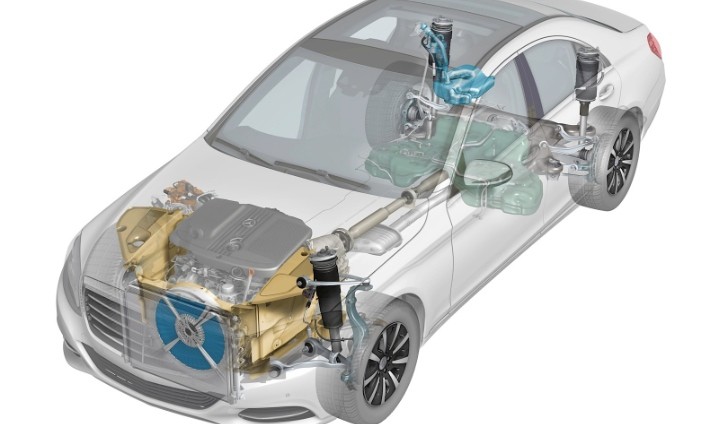Not many people know or remember this, but Mercedes-Benz was the first car manufacturer to introduce an engine encapsulation system in series.
That was happening back in the 1980s, with the over-engineered 190 (W201), also known as the original “Baby Benz” and the predecessor of the current C-Class (W205).
Three-decades later, the engine encapsulation technology in Stuttgart has evolved to the point that it even receives accolades from the European Commission.
While the engines from the Mercedes-Benz 190 were insulated mostly for noise reasons, with the oil burners getting the “whisper diesel” moniker for this very reason, the engine compartment encapsulation in modern Mercedes-Benz cars mostly takes care of heat insulation, which in turn makes the powerplants more efficient.
For some that may sound like marketing dribble, but the European Commission recently approved the new ECO Thermo Cover engine compartment encapsulation in the S 300 BlueTec Hybrid as an “Eco innovation,” therefore endorsing the Mercedes-Benz Real Life Efficiency strategy.
Thanks to certain insulating partitions in the engine compartment and a radiator shutter that can close electrically when the car is at a standstill, the heat inside the diesel engine remains where it is needed for far longer times, therefore reducing the friction in the engine, minimizing cold-starting losses and cutting CO2 emissions.
The actual fuel savings are, obviously, petite – just around 1.5-liters per full tank over the course of a year – but, combined with other real life fuel efficiency measures it makes a real difference.
The European Commission only approves technologies that can offer potential savings during actual driving, which means that those can't be taken into account in the New European Driving Cycle (NEDC).
Three-decades later, the engine encapsulation technology in Stuttgart has evolved to the point that it even receives accolades from the European Commission.
While the engines from the Mercedes-Benz 190 were insulated mostly for noise reasons, with the oil burners getting the “whisper diesel” moniker for this very reason, the engine compartment encapsulation in modern Mercedes-Benz cars mostly takes care of heat insulation, which in turn makes the powerplants more efficient.
For some that may sound like marketing dribble, but the European Commission recently approved the new ECO Thermo Cover engine compartment encapsulation in the S 300 BlueTec Hybrid as an “Eco innovation,” therefore endorsing the Mercedes-Benz Real Life Efficiency strategy.
Thanks to certain insulating partitions in the engine compartment and a radiator shutter that can close electrically when the car is at a standstill, the heat inside the diesel engine remains where it is needed for far longer times, therefore reducing the friction in the engine, minimizing cold-starting losses and cutting CO2 emissions.
The actual fuel savings are, obviously, petite – just around 1.5-liters per full tank over the course of a year – but, combined with other real life fuel efficiency measures it makes a real difference.
The European Commission only approves technologies that can offer potential savings during actual driving, which means that those can't be taken into account in the New European Driving Cycle (NEDC).





